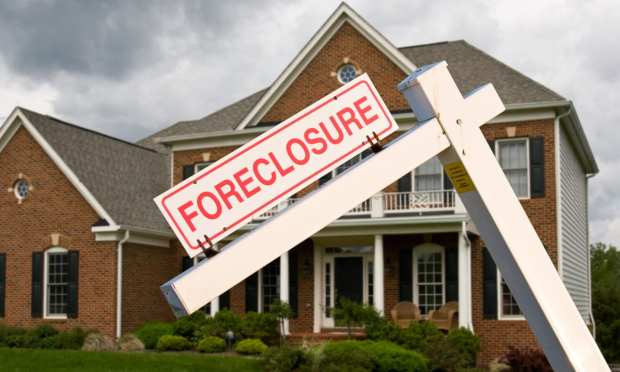CFPB Tries To Fend Off A Potential Foreclosure Crisis

The Consumer Financial Protection Bureau (CFPB) is taking a long hard look at mortgage servicers — and whether they’ve really been compliant with pandemic-era programs designed to keep struggling homeowners out of foreclosure. Accusations are surfacing that homeowners are failing to get help they were promised, or that institutions have been discriminatory in how they have portioned out aid.
A crackdown by the U.S. consumer watchdog could end in stiff penalties for mortgage servicers found to have hurt borrowers — and the CFPB is now actively looking for data on how those organizations are handling mortgage forbearance for their customers, and whether measures taken will actually have a positive effect.
“We are very concerned and we’re watching closely,” a CFPB official told Reuters. “Our supervision team is robustly asking for more data than ever from servicers.”
The effort comes as CFPB officials reaffirmed their dedication to monitoring the financial industry under the auspices of a new presidential administration and in the shadow of the COVID-19 pandemic that has knocked so many consumers from their financial footing.
“Part of [the CFPB’s] work is using our supervisory authority to ensure mortgage servicers are treating borrowers fairly and meeting their responsibilities under federal law,” a spokesperson told Reuters.
Because, as recent reported indicated, despite current protections in place to protect mortgage borrowers, foreclosures continue to tick up.
According to a recent U.S. Foreclosure Market Report for 2021, foreclosure filings were up 9 percent in Q1 2021 from the previous quarter — though they were down 78 percent year on year. All in there were 33,699 foreclosure filings within the first quarter including default notices, scheduled auctions and bank repossessions.
Moreover, with 11,880 U.S. properties in foreclosure filings, March 2021 marked the second consecutive month with month-over-month increases in U.S. foreclosure activity.
“The foreclosure moratorium on government-backed loans has virtually stopped foreclosure activity over the past year,” said Rick Sharga, executive vice president of RealtyTrac, an ATTOM Data Solutions company. He said the sudden increase can be explained by mortgage servicers, who have begun filing foreclosure for vacant and abandoned properties. “Which benefits neighborhoods and communities. It’s likely that these foreclosures are causing the slight uptick we’ve seen over the past few months.”
And while the CFPB had been somewhat more flexible than normal in dealing with banks suddenly deluged by forbearance requests last year, the organization has reportedly been taking a much sharper and more critical look at mortgage services as it attempts to head off what if fears could be a replay of the foreclosure crisis the U.S saw a decade ago.
“It already has started drilling down in its examinations and investigations of firms’ activities, and the pace will only increase,” said Quyen Truong, partner at law firm Stroock & Stroock & Lavan.
There is also discussion that the CFPB might move to further expand foreclosure protection for mortgage customers, lengthening and expanding the projections offered by the CARES Act already.
According to the six sources, the agency is examining a range of issues: how many and which borrowers are in forbearance; whether loan modifications will succeed in getting borrowers repaying; if servicers have been obstructing or delaying forbearance requests or granting only partial relief; and if some servicers have been discriminating against borrowers based on race or ethnicity, whether deliberately or inadvertently.
The new rule under consideration would allow loan servicers to offer loan modifications — including term extensions and payment deferrals — with less documentation for borrowers exiting forbearance and would institute a “temporary COVID-19 pre-foreclosure review period,” during which servicers could not initiate foreclosure notices or filings. It would last through Dec. 31, 2021, starting from the rule’s effective date.
That means servicers would not be able to start foreclosure proceedings against a homeowner until at least Jan. 1, 2022.
“Every one of the nearly 3 million borrowers behind on their mortgages should have a chance to explore ways to resume making payments and avoid foreclosure,” the CFPB said in its announcement of the proposed rule.
The CFPB’s new stance on mortgage forbearance has caught the notice of banks, not all of it positively. Pete Mills of the Mortgage Bankers Association pointed out that “record numbers” of Americans had so far exited forbearance without losing their homes and the CFPB should look to data gathered from servicers “to guide, rather than penalize, the industry” on how to best help homeowners in forbearance.
